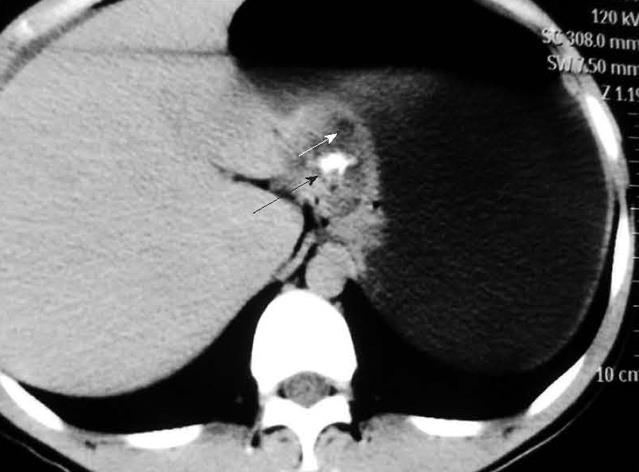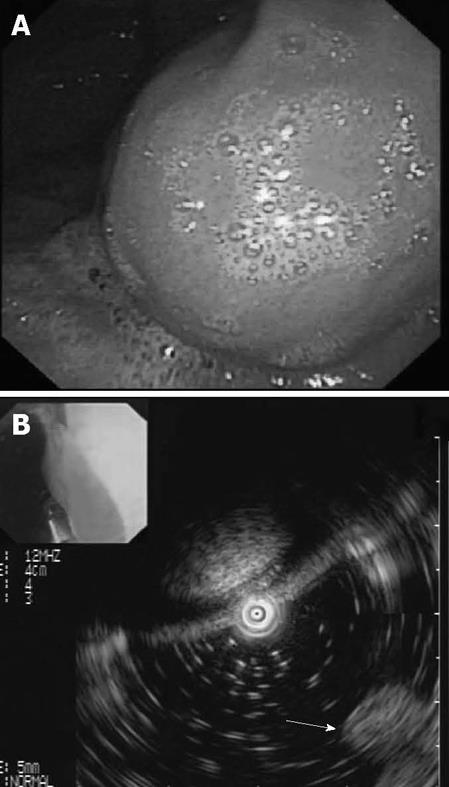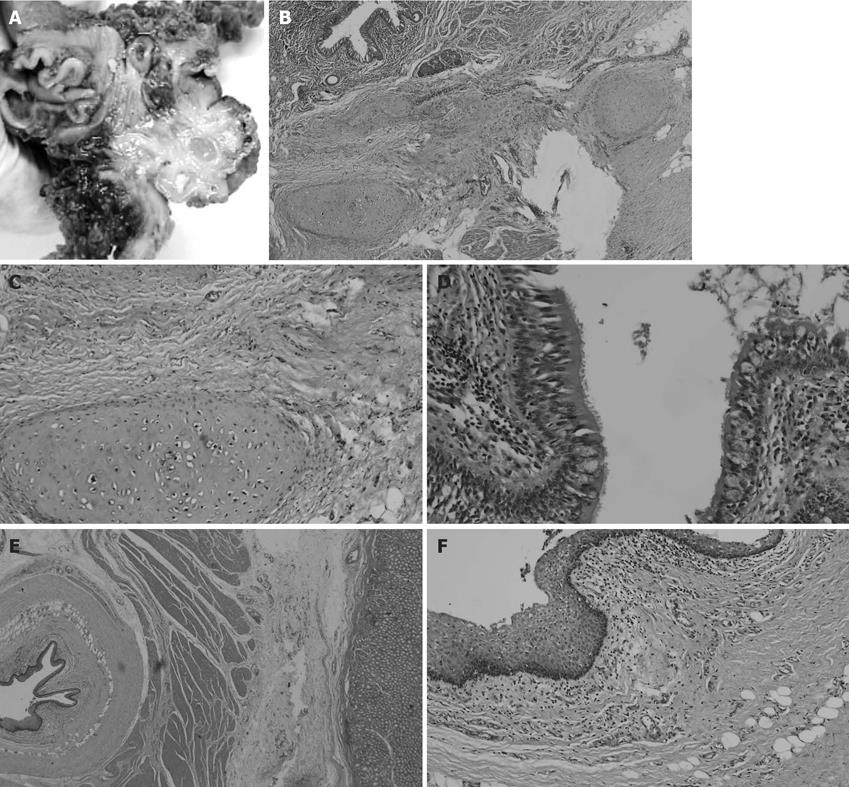Copyright
©2009 The WJG Press and Baishideng.
World J Gastroenterol. Apr 14, 2009; 15(14): 1782-1785
Published online Apr 14, 2009. doi: 10.3748/wjg.15.1782
Published online Apr 14, 2009. doi: 10.3748/wjg.15.1782
Figure 1 Axial CT shows a large soft tissue mass located on the inferior wall of the cardiac orifice of the stomach.
The border of the mass is clear and the mass is from the stomach. The density of the mass is uneven. Low density (white arrow) indicates cystic tissue and the high density (black arrow) indicates calcifications.
Figure 2 EUS was used to diagnose the gastric teratoma.
A: A spherical mass was noted on the inferior wall of the cardiac orifice, and the mass mucosa was normal; B: The heterogeneous mass was formed from the outer layer and the five-layer structure of the stomach in the mass was clearly detected (white arrow).
Figure 3 GT was pathologically examined under macroscopy and microscopy.
A: The mass was about 5.0 cm × 5.3 cm × 2.3 cm, and it derived from the inferior wall of the cardiac orifice; B: Photomicrograph of an area composed respiratory epithelium and cartilage without immature teratoma components (HE, × 20); C, D: The cartilage (C) and the respiratory epithelium (D) were amplified (HE, × 100); E: The three layers, mucous layer, submucous membrane, and muscular layer, of the wall of the stomach were clear. The tissue of GT was derived from the muscular layer of the stomach (HE, × 20); F: The Squamous cell was amplified (HE, × 100). C, D: The cartilage (C) and the respiratory epithelium (D) were amplified (HE, × 100); E: The three layers, mucous layer, submucous membrane, and muscular layer, of the wall of the stomach were clear. The tissue of GT was derived from the muscular layer of the stomach (HE, × 20); F: The Squamous cell was amplified (HE, × 100).
- Citation: Liu L, Zhuang W, Chen Z, Zhou Y, Huang XR. Primary gastric teratoma on the cardiac orifice in an adult. World J Gastroenterol 2009; 15(14): 1782-1785
- URL: https://www.wjgnet.com/1007-9327/full/v15/i14/1782.htm
- DOI: https://dx.doi.org/10.3748/wjg.15.1782











